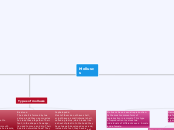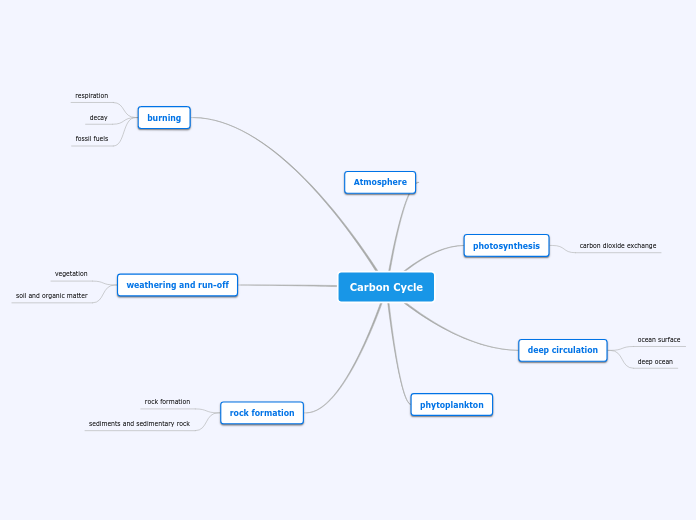Biology SBI 3U
Unit 2 Genetics
Sex linked disorders and genes
Genes are traits passed on by family members, Punnett squares help to show this, and a pedigree chart shows as well.
Traits are inherited by inheritance of traits whose genes are found on the autosomes.
Sex linked disorders are recessive on the X chromosome
Biotechnology
Gene cloning multiplies the gene copies of a DNA segment.
Therapeutic cloning produces genetically identical cells in order to treat a disease. Reproductive cloning produces a genetically identical organism.
Cloning make new gene cell or organism from a singular cell or tissue from parents.
DNA is related to this because it controls the characteristic of the cells. Before the cell reproduces, the cell will be copied.
Genetic research using biotechnology identifies and diagnosing genetic disorders.
This includes techniques that use living organisms to make products or provide certain services. This may alter the normal genetic make up of viruses, bacteria, plants, and animals.
Genetic engineering also uses biotechnology to combine genes into a cell.
This allows varieties to produce with in a short amount of time
Karyotype
A karyotype represents the amount of chromosomes in the cell of a specific organism. Autosomes are paired and arranged then they are numbered 1-22. The last pair will always represent sex chromosome pairs. A male will have an XY pair and females will have an XX pair. An extra chromosome results is down syndrome disorder.
Karyotype charts are used in the process of meiosis because they determine nondisjunction, genetic screening, and prenatal testing.
A normal male will have 46, XY and a normal female has 46, XX. A down syndrome male has an extra # twenty one chromosome and a female has an extra # eighteen chromosome in Edwards syndrome. An extra X chromosome results in Klinefelter syndrome.
Cell Division
Abnormal mitosis in cells result in cancer. The healthy cells divide until they are signaled to stop by the nucleus. The cancer cells continue to divide faster than the healthy cells.
Abnormal meiosis will cause nondisjunction. One daughter cell will have too much genetic information in this case.
Stages of meiosis
PI, MII, AII, and TII are similar to the stages of mitosis
Mitosis is plant and animal cloning. This involves genetic engineering. And transplants, biotechnology in agriculture.
PI. This is where synapsis occurs in order for the individual chromatid of the homologous chromosome pair to intertwine and exchange genetic materials.
MI. In this stage homologous chromosomes will line up along the equatorial plate. This is with exchanged materials.
AI. The daughter cell receives either chromosome from a homologous pair. The mother chromosome will then move to one pole while the father chromosome moves to the other pole. This is where the haploid number of 23 is created.
TI. The membrane now forms around each nucleus. the chromosomes here are not identical. They are just similar.
The result of this is 4 gametes that carry non identical genetic information.
The diploid number is the number of chromosomes that doubles the haploid number of a gamete. All human cells except for gametes contain 46 diploid chromosomes.
The Haploid number is the amount of chromosomes that undergo meiosis in order to produce gametes with 23 chromosomes.
Meiosis is the other process in cell division. In meiosis, sex cells (or gametes) are formed. This is called gametogenesis. There are 2 stages involved in this, They are similar to the stages in mitosis.
In Meiosis there are half the amount of chromosomes in the gametes as the parent cell. In mitosis, the parent cells and the daughter cells have the same amount of chromosomes.
Mitosis is nuclear division. and only takes up a minimal amount of the cell cycle.
Part of mitosis is interphase. The cell spends most of the time in this certain phase. It is the replication of chromosomes and it is rapid growth in order to prepare the cell for the mitosis and cytokinesis stages. Interphase is marked by rapid growth.
Cell division reinforces the principles of the cell theory. Cell division is important to replace, and repair old or damaged cells. Then it will help with reproduction.
All genetic material is contained with chromosomes that are made up of DNA and they are arranged in segments called genes. The purpose of a gene is to carry information for one certain trait or characteristic.
The cell Cycle is the sequence of events from one division to another. This occurs in both cell and nuclear
Unit 1 Plants
Succession
This is important for plants because the magnitude affects the organisms that inhabit that area. Greater specie diversity areas have better capacity to survive change. The stability will increase as the number of plant species increase.
Secondary succession
Secondary succession is a recolonization of an area after a disturbance. This occurs where soil is present. There are changes in composition and number of species over time. This occurs after the climax community has already been developed and it will remain stable unless another ecological disturbance occurs.
Primary succession
Primary succession is the establishment of a community in an area where there has previously been a disturbance and it left exposed rock with no topsoil. Plant's may be a pioneer species in this area because they were one of the first organisms that appeared and survived in the different conditions. The plants attract animal species in order to create a climax community that is self renewing.
Reproduction
Fruits protect and disperse seeds but they will not provide nutrients to the developing embryo.
Angiosperm pollination can be by animals or wind. some species cross pollinate and in self pollination pollen can be transferred from one flower to another on the same plant.
In angiosperms, sexual reproduction occurs in a flower. This contains female and male reproductive organs. Pistil is the needed female part, stamen is the needed male part.
Sexual reproduction is when seeds are dispersed by wind and animals. In gymnosperms, it occurs when pollen grains from a male cone fertilize an ovule in a female cone because of population. This is from wind.
Plant Characteristics
Stems can either be herbaceous which means they are non woody, thin, soft, and green. They can also be woody which are shrubs, conifers, or dicot trees. The stems of a dicot tree will grow every year.
A stomata is what regulates the exchange of gasses needed for photosynthesis to occur. It allows water vapor to escape from leaves and diffuse into air spaces. It then evaporates out to the atmosphere through the stomata.
Mesophyll is located between the upper and lower leaf surfaces. It contains parenchyma cells and lot's of chloroplasts. The palisade mesophyll are tightly packed and contain chloroplasts. The spongy mesophyll are irregular shape and they have fewer chloroplasts.
Primary Roots are the main root that develops from seed and secondary roots are the smaller lateral branches.
Taproots develop a small lateral root and Fibrous roots occur when primary roots are replaced by adventitious roots that do not penetrate deeply but are widely spread.
There are many different groups plants can be classified under.
Dermal plant tissues are found in the epidermis which produces waxy non cellular layers called the cuticle. The protect against water loss and tissue damage.
Vascular tissue has 2 types. Phloem and xylem. Xylem is made from water and minerals. They contain fibers and cells that are called tracheid and vessels. Phloem transports sugars and is composed of sieve tubes. Ground tissue includes parenchyma (Living cells that make up the bulk of the plant body), collenchyma (Living cell that strengthens the plant), and sclerenchyma (Provides strength and rigidity for structural support).
Angiosperms have enclosed seeds and they are protected inside of a fruit. They are flowering plants and the plant is the reproductive organ. One seed leaves are called monocots
Gymnosperms have naked seeds and they are in a cone like structure that is very unprotected. They all have needle like leaves because it helps the plants survive different weather conditions. They are also covered by a waxy cuticle. Examples are pines, spruces, and cedars. 2 seed leaves are called dicots.
Seed Plants are also called spermatophytes. These are a subdivision of vascular plants. These contain roots, stems, and leaves. They can be many different colors, shapes, and sizes. They are very complex and the idea of the seed, is to protect the embryo.
They have evolved from early green algae and nonvascular plants. To survive they must have energy, nutrients gas exchange, and protection from diseases. Their purpose is to catch the sun's energy in order to convert it to chemical energy using photosynthesis.
Plant cells
Plant cells contain a cytoplasm, vacuole, cell wall, cell membrane, chloroplast, nucleus, mitochondria, ER, ribosome, and a Golgi body. The cell is a square type shape.
A plant cell includes a cell wall, vacuole, cytoplasm, cell membrane, chloroplast, nucleus, mitochondria, ER, ribosome, and a Golgi body. Plant cells are square type shaped.
A cell membrane is a thin layer of proteins, and allows substance to pass into the cell. There is also the lysosome. These are vesicles that contain digestive enzymes. The DNA in chromosomes are contained in the nucleus.
Viruses
A virus can cause a disease
Can not do it all at once and needs a host cell
Unit 4 Diversity of Living Things
Fungi
The 4 types of fungi are club fungi, molds, sac fungi, and imperfect fungi.
Fungi is used for food, decomposition, and medicine. They can be used to kill bacteria and truffles and mushrooms are used as food.
They do not process chlorophyll like plants do
A fungi are a group of living organisms. They are not considered animals, plants, or bacteria
Fungi have complex eukaryotic cells like animals and plants.
Fungi get their food by decomposing matter
Protist
Algae reproduces sexually and asexual primarily by binary fission or fragmentation
All protists are heterotrophs which means they must move around in order to get food.
A protist can cause virus, and diseases
Protists are plant like because the organisms contain chlorophyll.
Algae and euglena are 2 types of protists. They are both plantlike protist. Euglena is a pellicle and Algae are multicellular. They do not form tissues.
Bacteria
A bacteria is a small single cell organism
prokaryote cells which do not have a membrane or a nucleus.
Bacteria can cause infections . Three types of bacteria's can be classified as aqua spirillum Bengal, paenibacillus polymyxa, and streptococcus pyogenes.
Cells
Unit 3 Animal Systems
Circulatory System
2 circuits
pulmonary circuit and the systemic circuit
4 principles functions and three main components
Blood, Vessels, and the heart
transportation of gasses, maintenance of body temperatures, circulation of hormones, Plays a part in the immune system
A closed circulatory system is when blood is kept under pressure and the blood is supplied for metabolic needs.
Open circulatory system allows blood to flow freely within the body cavity
Digestive System
For healthy digestion, healthy eating, maintaining balance, energy, and calories are very important factors. Without these factors, your body may go through malnutrition.
The digestive system is one long tube called the gastrointestinal tract. This includes the mouth, stomach, small intestine, and large intestine.
The accessory organs are the liver, gall bladder, pancreas, and digestive enzymes. The first step in digestion is chewing.
The digestive system breaks down food into useable nutrients. This requires body cells.
The 4 stages of food processing are Ingestion, digestion, absorption, and egestion.
Respiratory System
The respiratory system releases energy . Gas exchange occurs at area from high to low concentration.
The respiratory System controls the mechanics of breathing. Inspiration, and expiration. Our lungs expand and contract in order for us to breath in air.
The exchange of gas and the in take of oxygen, gas, then letting out the carbon dioxide. This is the process of respiration.
Gas Exchange









